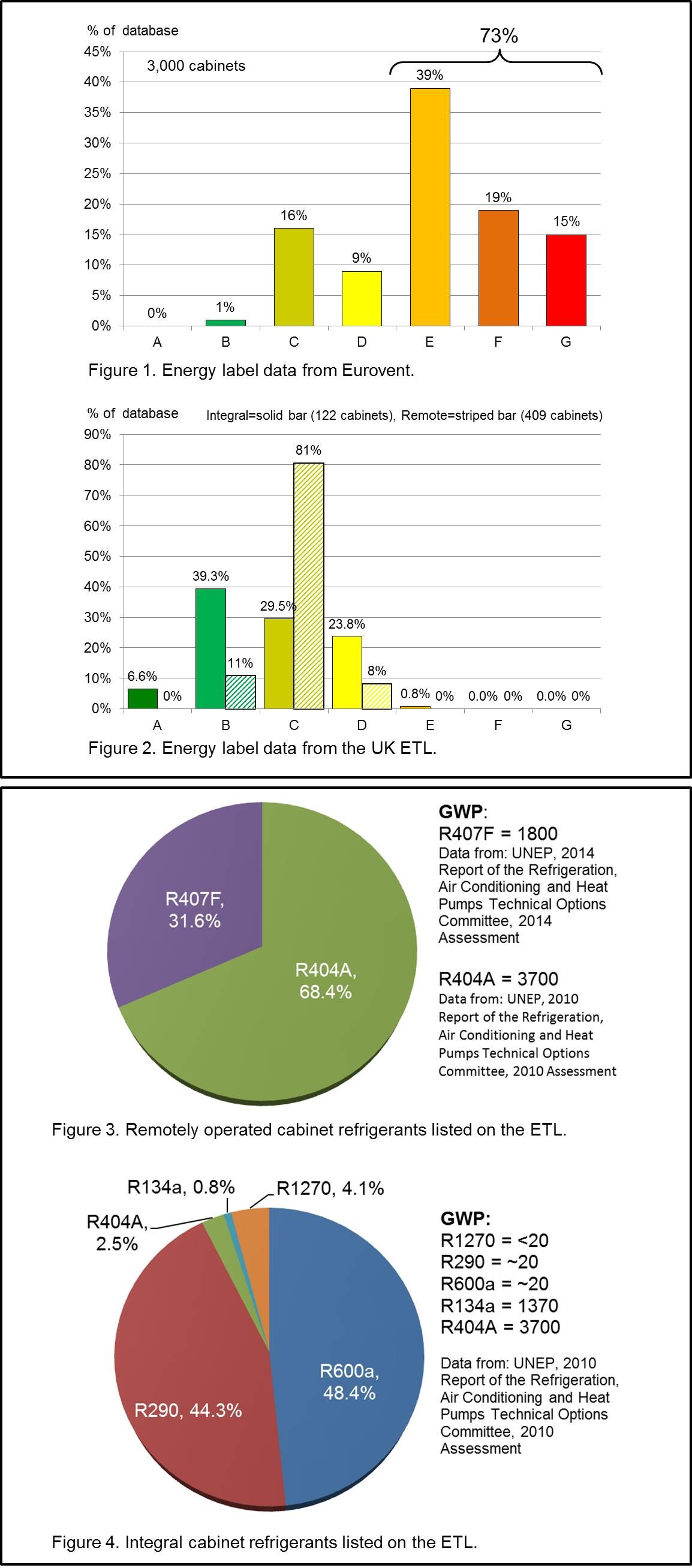Energy labelling market assessment

According to draft eco-design Regulations for commercial refrigeration (refrigeration with a direct sales function) manufacturers now have until 1 March 2021 to ensure that their cabinets comply with the labelling requirements. As energy labelling is now less than 18 months away we thought it would be an interesting exercise to assess market data to see how labels would be applied.
Two publicly available data sources were identified to assess the market. These were; the Eurovent database and the UK Energy Technology List (ETL). Eurovent carried out an exercise to assess the energy labels of the cabinets on their database in January 2019 (Vadoudi, K., Bibalou, D., Butler, I. and Marinhas, S. Energy efficiency of Remote Refrigerated Display Cabinets beyond the implementation of the Ecodesign and Energy Labelling Directives). This consisted of an analysis of 3,000 cabinets, all of which were remotely operated. Even though the Eurovent data was presented before the latest draft of the eco-design Regulations was published it appears that the calculations used comply with the latest eco-design requirements. Data from the ETL was extracted from the ETL database for all cabinets listed. This consisted of 122 integral and 409 remotely operated cabinets. Some data integrity issues were noted in the ETL data and where obvious errors were apparent these were corrected in the analysis carried out by RD&T.
The calculations presented by Eurovent showed energy labels ranging from B to G with 73% of cabinets being rated from E to G (Figure 1). The ETL database energy labels ranged from A to E with remotely operated cabinets having more A to C labels (92%) than integral cabinets (75%) (Figure 2). Only 0.2% of all products (integral and remote) had energy labels equal to or less than E.
It is interesting to see that there appear to be large differences between the two databases. The cabinets listed on the ETL scheme are intended to be within the top 25% of energy efficient equipment in the UK market. Eurovent certification supports end users in selecting the most energy efficient equipment but equipment is just rated and (unlike the ETL) there are no minimum energy performance standards. It therefore appears that the Eurovent database is more representative of the overall market in Europe whereas the ETL reflects higher performance products.
Another interesting aspect of the ETL database is the refrigerants listed for the products. Remotely operated cabinets are mainly tested using R404A (68.4% of cabinets) which has a GWP greater than that allowed under F-gas regulations for commercial refrigeration from 1 January 2020 (Figure 3). Integral cabinets are better aligned to F-gas regulations as only 3.3% of cabinets operated on refrigerants that will be banned for hermetically sealed cabinets after 2022 (Figure 4). From January 2020 HFC refrigerants used in stationary refrigeration systems with a GWP of >2500 will be banned. After 2022 central pack refrigeration systems with a rated cooling capacity of >40 kW will be banned from operating using F-gases with a GWP of >150. Hermetically sealed systems are required to use HFC refrigerants with a GWP of <150 from 2022. Although many of the remotely operated cabinets on the ETL were listed many years ago, 49% of the R404A cabinets were listed in the past 2 years and so are potentially still current models which will need to be operated using lower GWP refrigerants in the future.
For further details on energy labelling and F-gas please contact Judith Evans at RD&T (j.a.evans@rdandt.co.uk).